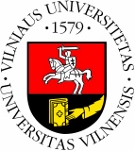Studies and researches
2/2025
SPACE-RL Innovation Transfer Model “Science – Business”
The article deals with creating the innovation
transfer model “science - production – business”. It is based on quantitative
indicators for assessing the external environment and market analysis, the
landscape for implementing the development and introduction of innovation and
evaluating the internal environment and the level of readiness for
implementation. The authors provide ways of commercializing the scientific
research results and describe the role of an entrepreneurial university in
achieving the main tasks of innovation and technology transfer. A combined
SPACE-RL model for assessing the prospects for new scientific ”products”
concerning external and internal influencing factors is proposed. The SPACE
matrix, from a subjective assessment tool based on qualitative indicators
determined by experts, has turned into a SPACE-RL model, in which it is
possible to compare the entrepreneurial university's capabilities in terms of
the strategy of bringing the invention to the market and the readiness of the invention
to become innovation The SPACE-RL model maximally objectifies the innovation
transfer process, reducing the influence of qualitative factors on
decision-making.
transfer model, technology transfer, innovation, entrepreneurial university, commercializing, SPACE-RL model
O31, O32
O31, O32














